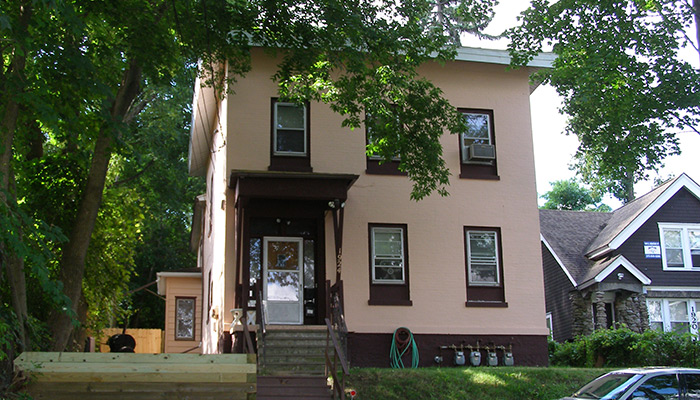The Old Neighborhood Part I
Stop #38
1924 East Genesee
- Built: 1860s?
- Architect: Unknown
Italianate style houses are among the oldest and most distinctive structures on the Eastside of Syracuse; cube-like houses that are still scattered throughout the thousands of other later residences. This is one of the few Italianate houses in the Greater Westcott area. Another is the Scott House on the East Genesee Street at Scott Avenue in Scottholm. These houses, built mostly in the third quarter of the nineteenth century, pre-date Syracuse’s suburban expansion to the East and the laying out of the new residential grids that mark the first new residential developments. Thus, the Italianate houses quickly tell us where the old roads were. The houses mostly faced major travel routes, and these also often indicate the locations of prosperous farms. This phenomenon is hardly unique to the Eastside; the process can be traced on all sides of Syracuse. The further one travels from the modern city on the old pre-automobile routes, the more Italianate houses one finds still in relative pristine isolation.
This house retains its original cube-like form but has suffered from alterations including its cornice and roof. Originally, brackets probably supped a hipped roof which may then have carried a belvedere, a type of square-shaped cupola with windows. A paved parking areas now covers the area that once had an expansive front lawns or walkways.
An even more altered Italianate house exists around the corner at 309 Columbus. The original form of house hardly recognizable beneath its recent vinyl siding.
Italianate houses were especially common in Central New York, since so much of the region underwent rapid and prosperous development during just those decades when the style was most popular. These houses once filled the downtown residential streets of Syracuse, and fine examples can still found on many of the roads leading into the city and on the main routes between towns and villages. Italianate farmhouses stood close to the road (though not as close as they often seem today, since so many old highways have been widened). They opened onto lawns, gardens on the sides and farm fields and pastures in the rear. Carriage houses were often in the rear of more urban Italianate residences, while barns and other buildings were in the vicinity of the rural houses.
Italianate houses exuded a sense of solidity and dignity typical of the pre-Civil War era that emphasized civic-minded striving and persona modesty and family thrift. This regularity of form – some would same predictability – would be upset in the economic boom period of the next generation with the often exuberant experimentation of the Queen Anne style when asymmetrical forms, varied roof lines and mixed siding material and colors created a dizzying array of houses forms.
sources:
Gruber, Samuel D., “Italianate Style Houses on Syracuse’s Eastside,” My Central New York (Aug. 24, 2013)
